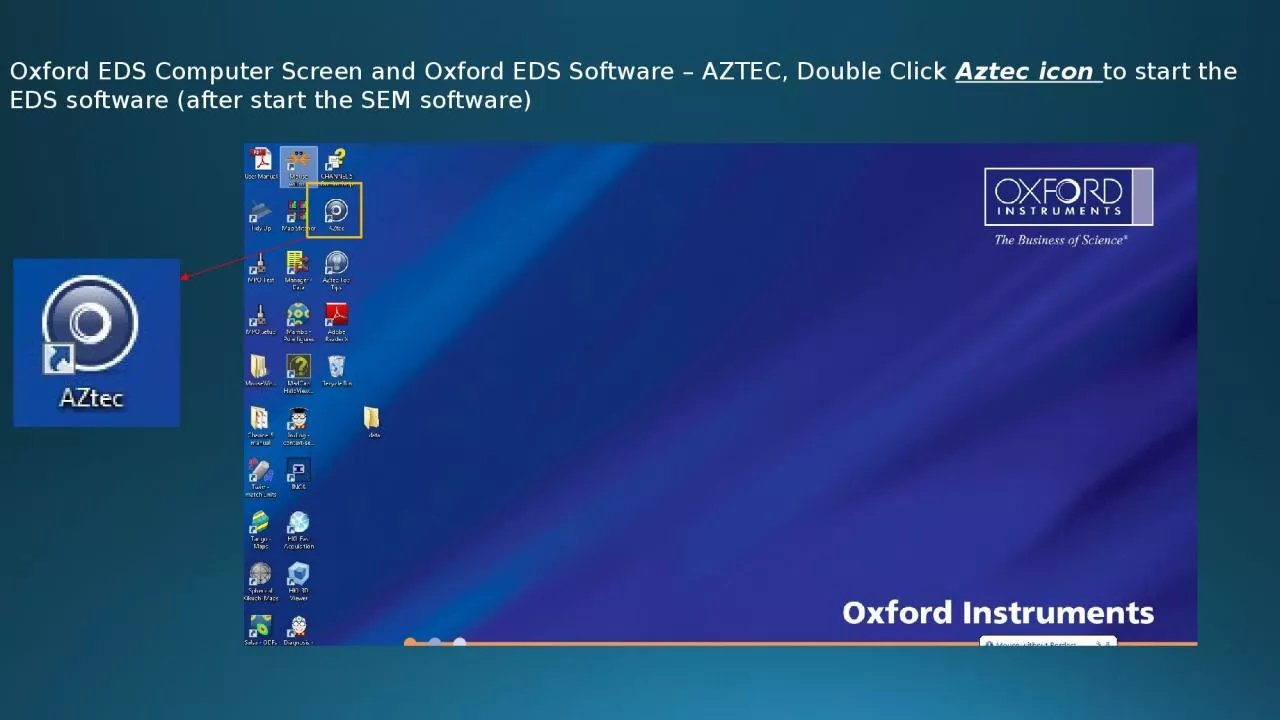PPT-Oxford EDS Computer Screen and Oxford EDS Software – AZTEC, Double Click
Author : priscilla | Published Date : 2023-11-11
Aztec icon to start the EDS software after start the SEM software Open Or Set up New Project Default Project Name Project 1 you can change the name Put your data
Presentation Embed Code
Download Presentation
Download Presentation The PPT/PDF document "Oxford EDS Computer Screen and Oxford ED..." is the property of its rightful owner. Permission is granted to download and print the materials on this website for personal, non-commercial use only, and to display it on your personal computer provided you do not modify the materials and that you retain all copyright notices contained in the materials. By downloading content from our website, you accept the terms of this agreement.
Oxford EDS Computer Screen and Oxford EDS Software – AZTEC, Double Click: Transcript
Download Rules Of Document
"Oxford EDS Computer Screen and Oxford EDS Software – AZTEC, Double Click"The content belongs to its owner. You may download and print it for personal use, without modification, and keep all copyright notices. By downloading, you agree to these terms.
Related Documents














